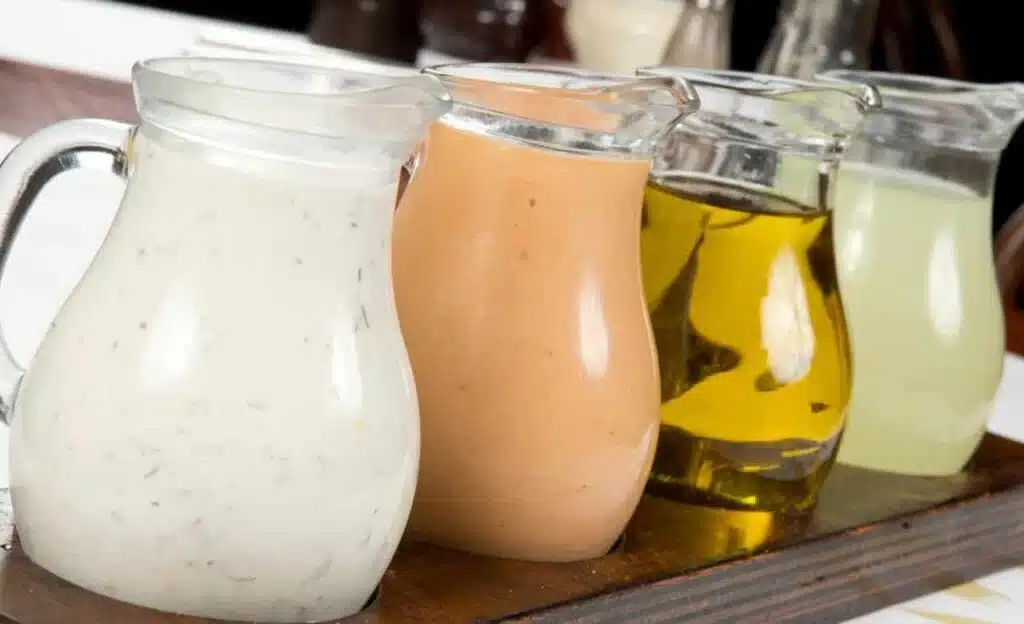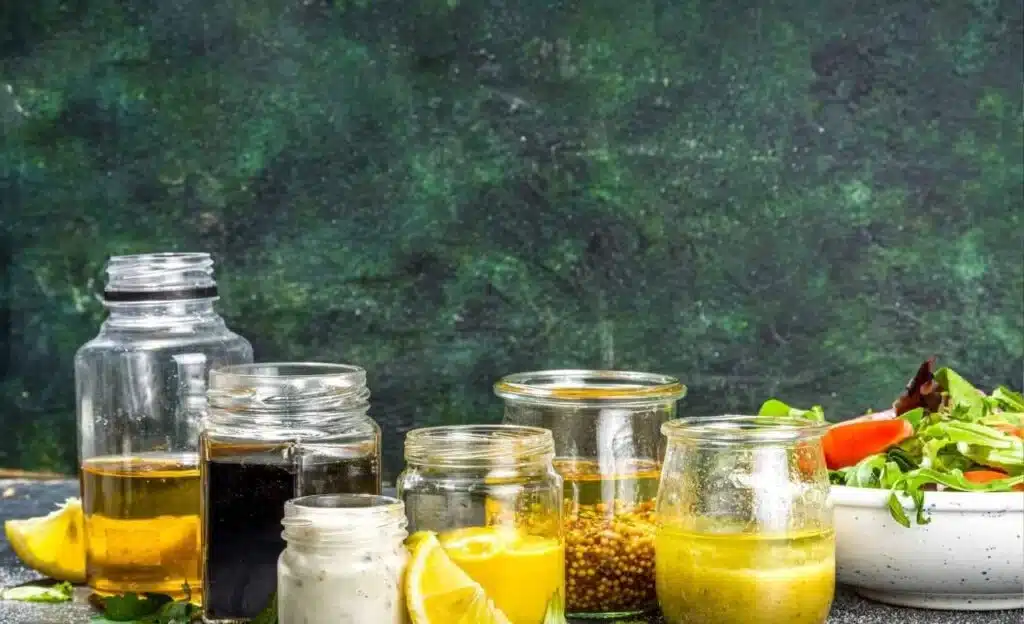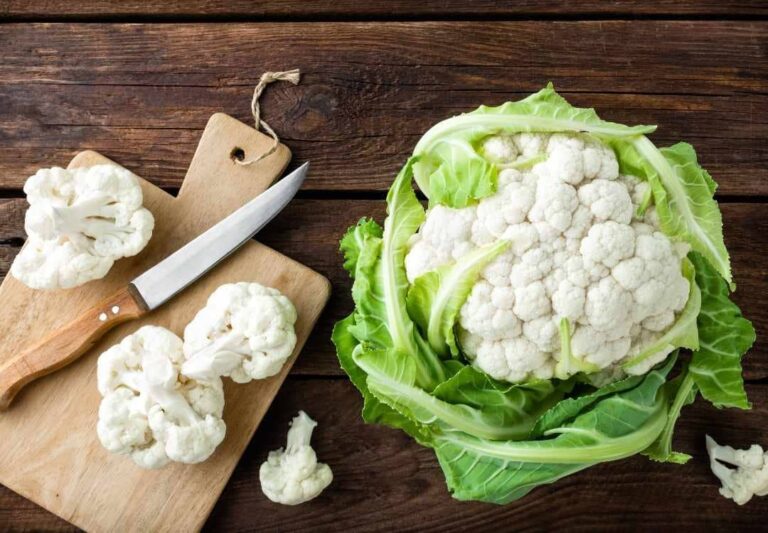Does Salad Dressing Go Bad?
Have you ever been in a situation where you pull out that bottle of salad dressing from the back of your pantry only to find it has an expiration date from weeks or even months ago? If so, you may be wondering: Does salad dressing go bad?
It can be hard to tell with certain foods if they are still safe to consume after their expiry date, especially for salad dressings. However, a few rules of thumb can help you determine whether or not your old bottle of dressing is safe to eat.
Read on as we talk all about how long salad dressings can last in storage and some tips on extending the shelf life of salad dressings.

Contents
What Is Salad Dressing?
Salad dressing is a type of sauce used to enhance the flavor of salads. Most salad dressings blend oil, vinegar, lemon juice, and seasonings.
These ingredients combine to create a flavorful mixture that can be drizzled over various greens and vegetables.
The role of salad dressings is not just to add moisture to the salad but also flavor, tying together the different ingredients into a cohesive dish.
Whether it’s a creamy ranch, tangy vinaigrette, or a spicy thousand island, the right salad dressing can transform a simple bowl of greens into a delightful meal.
What Is Homemade Dressing Made Of?
Homemade dressing is primarily composed of olive oil, emulsified to a perfect consistency, using a blender or food processor.
Additional flavor is introduced with seasonings, most commonly olive oil and black pepper.

What Are the Different Types of Salad Dressing?
There are many different types, each with its unique taste and ingredients. Here are some popular ones:
Balsamic Vinaigrette
This is a classic salad dressing that combines balsamic vinegar’s sweet and tangy flavor with olive oil. It’s perfect for a simple green salad or to drizzle over tomatoes and mozzarella.
Caesar Dressing
Creamy and rich, Caesar dressing is typically made with garlic, anchovies, egg yolks, and Parmesan cheese.
It’s the signature dressing for a Caesar salad, but it also works well with chicken and seafood salads.
Italian Dressing
This zesty vinaigrette blends vinegar or lemon juice with a medley of herbs and spices.
Italian dressing is a multifaceted ingredient that can be incorporated into various salads or used as a marinade.
Blue Cheese Dressing
This dressing is thick and creamy, featuring blue cheese’s strong, tangy flavor.
Blue cheese is ideal for hearty salads like a wedge salad or as a dip for vegetables.
Balsamic Vinegar
While not a dressing on its own, balsamic vinegar is a key ingredient in many salad dressings, including balsamic vinaigrette. Its sweet yet tangy flavor adds depth to any salad.

Does Oil and Vinegar Salad Dressing Go Bad?
Oil-based dressing, particularly vinaigrettes containing vinegar and spices, typically have a shelf life of about three to four weeks when stored in the refrigerator.
When continuously refrigerated, such dressings typically maintain their best quality for about six to nine months.
However, it’s important to note that variations can occur depending on the specific ingredients used. Dressings that incorporate fresh herbs and spices may have a shorter lifespan.
Vinegar dressings, for instance, generally remain at peak flavor for up to two weeks, although they could last for up to a few weeks longer.

Does Salad Dressing Expire?
Yes salad dressing can expire, whether it’s shop bought or your own dressing, a full fat or low fat salad dressing, the shelf life of this condiment will have a best by date.
Unopened Bottled Salad Dressings
- Unopened store-bought salad dressings can last past their printed expiration date for 12 to 18 months if properly stored.
- The best storage place for unopened salad dressing is a cool, dark pantry.
- Quality during this extended period largely depends on how the dressing is stored.

Opened Bottled Salad Dressings
- Once opened, the lifespan of salad dressings shortens considerably.
- Opened store-bought salad dressings, when sealed tightly and stored in the refrigerator, can last up to two months.
- The lifespan can vary based on the type of dressing. Dairy-based options like blue cheese or Caesar dressing may last one to two additional months, while oil-based choices like Italian can last longer.
- Despite being safe to consume past these points, the flavor and texture quality may need to be improved. Therefore, using them within a few months of opening is generally recommended.

How Do You Know if Salad Dressing Is Spoiled?
Here’s how to tell if salad dressing has gone bad:
- Change in Smell: A clear indication of spoilage is an off or rancid smell. The salad dressing is likely spoiled if the aroma differs from when you initially opened the bottle.
- Color Alteration: If there are noticeable changes in the color of the dressing, it may indicate spoilage. Salad dressings can darken or lighten over time, which is a sign of degradation.
- Texture Differences: The texture of the salad dressing can also give away signs of spoilage. If the texture seems thicker or thinner than usual, or if there are unusual clumps, it’s best to discard the dressing.
- Separation of Ingredients: While some separation is normal, excessive separation or a change in how the ingredients separate can indicate spoilage.
- The appearance of mold: clearly indicates bacterial proliferation and food degradation. If you see mold, throw out the dressing immediately.
- Off Taste: A small taste can help confirm if the dressing has gone bad if you still need to check for the above signs. However, do not consume large quantities if you suspect spoilage.
- Change in Consistency: A change in consistency can be a sign that the salad dressing has gone bad. For instance, if it was once creamy and smooth but has become watery or gritty, it’s probably spoiled.
- Expired Use-By Date: While products can sometimes last beyond their use-by date, consuming them past this point is generally not advisable. If your salad dressing has passed its use-by date, it’s likely unsafe to eat.
- Storage Conditions: If your salad dressing has yet to be stored properly – for instance, if it’s a type that needs refrigeration but has been left out at room temperature for a long time – it’s likely to spoil faster.
- Unusual Bubbles or Fizz: If you notice any unusual bubbles or fizz when you open the bottle, this could indicate bacterial activity and mean the dressing is off.
- Oil Turns Rancid: In oil-based dressings, the oil can turn rancid over time. This will give the dressing an off smell and taste.
- Long Period Since Opening: If it’s been a long time since you first opened the dressing, there’s a higher chance that it’s gone bad, even if it’s been refrigerated the whole time.
Can You Eat Expired Salad Dressing?
Consuming salad dressings past expiration dates is generally safe, but certain factors must be considered.
Once the product exceeds the date printed on the bottle, its quality and safety can no longer be assured.
Eating expired salad dressing might not make you sick immediately, but it could cause an upset stomach or food poisoning. It’s also worth noting that harmful bacteria could grow in the dressing over time, particularly if it has not been stored properly.
Is Unopened Salad Dressing Good After Expiration Date?
Yes, unopened salad dressing can still be safe to consume after its expiration date.
Salad dressings can typically remain good for use anywhere between one to four months past the expiration date.
This is because the “best by” or “use by” date on the packaging is often about quality rather than safety.
Does Dressing Go Bad if Not Refrigerated?
Dressing can only go well if refrigerated, especially with ingredients like cream, vegetables, fruit juice, nut oils, yogurt, or mayonnaise.
However, commercial salad dressings should be refrigerated after opening and typically last a few weeks to two months.
If leftover dressing is left out overnight, it’s safest to discard it to avoid any risk of food poisoning. To keep your dressing fresh, it’s best to store it in the refrigerator.
How Long Does Homemade Salad Dressing Last in Fridge?
When kept in an airtight container in the fridge, homemade dressings generally have a shelf life of approximately a week. The longevity of these dressings can depend on the ingredients used.
Dressings made with vinegar and oil can last up to three to four weeks, while those containing raw egg yolk or garlic retain good quality for about a week.
Mayonnaise-based dressings should be consumed within six days. However, if you’re using fresh fruits or vegetables in your dressing, it’s best to use it within 3-7 days.
Dry mix dressings that are properly stored can last for months, and those containing dairy like ranch or Caesar can last for a month or two after opening with refrigeration.
It’s important to note that good quality ingredients can also contribute to the shelf life of homemade dressings.

How Long Does Salad Dressing Last Unrefrigerated?
Salad dressings can typically stay unrefrigerated for a few hours. If the dressing is made with only raw greens and vegetables in a sealed container, it’s estimated to be safe to leave out for 8-10 hours.
Store-bought salad dressing that has yet to be opened can last up to three months in the pantry.
However, leaving certain types of dressings, like Italian and mayonnaise-based, unrefrigerated for more than 2 hours is not recommended.
Can I Freeze Leftover Salad Dressing?
Yes, you can freeze leftover salad dressing.
However, the texture and consistency may change after thawing, especially for creamy or vinaigrette dressings. It’s best used within three months for optimal quality.
How Do You Store Salad Dressing?
If properly stored, salad dressings can avoid becoming perishable and susceptible to spoilage due to bacteria growth, mold, and enzymatic activity.
- Refrigerate Immediately: Once opened, most salad dressings should be stored in the refrigerator to slow bacterial growth. Even if the label doesn’t specify, it’s a good practice to refrigerate dressings containing dairy, eggs, or fresh ingredients.
- Seal Tightly: Half-open bottles can let in air and contaminants, speeding up spoilage and encouraging bacterial growth. Always ensure your salad dressing bottles are properly sealed before storing them.
- Avoid Heat Sources: Avoid placing your salad dressing near heat sources. Heat can degrade the quality of the dressing and accelerate bacterial growth. The best place to store your dressing is in the cooler sections of your refrigerator, not on the door where temperatures fluctuate.
- Monitor Expiry Dates: Most salad dressings have a ‘best by’ date. It’s important to remember this date refers to unopened bottles. Once opened, the dressing should be used within a few weeks for the best quality.
- Discard If In Doubt: If your salad dressing has an off smell, color, or texture, it’s better to throw it out. Bacterial growth can make the product unsafe to consume.
- Practice FIFO: First In, First Out. Always use your oldest salad dressing first to ensure you enjoy it at its best quality.
- Avoid Cross Contamination: Always use clean utensils when serving salad dressing. Introducing food particles into the bottle can promote bacterial growth.
How Do You Eat Salad Dressing?
Here are some ways you can use salad dressings that include ingredients like sour cream, olive oil, and black pepper:
- Tex-Mex Dishes: Dressings made with sour cream, olive oil, and black pepper can be used in Tex-Mex dishes such as tacos, nachos, or burritos to add a creamy and zesty flavor.
- Potato Salads: Sour cream-based dressings are often used in potato salads, and when combined with olive oil and black pepper, they can add a rich and tangy taste to the dish.

- Dipping Sauce: These dressings are a dipping sauce for vegetables, chips, or bread. The combination of sour cream, olive oil, and black pepper provides a unique flavor profile that complements a variety of snacks.
- Marinades: Olive oil-based dressings with sour cream and black pepper can also be used as marinades for meats or vegetables. The dressing can help to tenderize the meat while also adding flavor.
- Middle Eastern Dishes: Certain Middle Eastern dishes use creamy dressings made with sour cream, olive oil, and other ingredients. Adding black pepper to these dressings can bring out the dish’s flavors.
- Pasta Salads: Creamy dressings, especially those made with sour cream, olive oil, and black pepper, can be used in pasta salads to add a rich and tangy flavor.

- Green Salads: Of course, the most common use for these dressings is in green salads. The combination of sour cream, olive oil, and black pepper can enhance the taste of fresh greens.
- Sandwich Spreads: These dressings can also be used as spreads for sandwiches or wraps. The sour cream’s creaminess, the olive oil’s richness, and the black pepper kick can elevate any sandwich or wrap.

Is Salad Dressing Unhealthy?
While salad dressing can enhance the taste of your greens, it’s important to consider the potential health risks associated with some types.
Regular salad dressings can be high in calories, often containing up to 200 calories per two tablespoons.
Additionally, many store-bought dressings contain significant amounts of sodium, added sugars, and saturated fats, which can negatively impact your health.
Some even carry unhealthy trans fats. However, only some dressings are good for you. Vinaigrette options like balsamic or oil and vinegar are generally healthier choices.
So, Does Salad Dressing Go Bad?
In short, yes, most salad dressings go bad eventually. Homemade dressings can last for months when stored properly in the refrigerator, and unopened store-bought dressings have a shelf life of 1-4 months.
However, once opened, they should be refrigerated and consumed within a few weeks for optimal quality.






